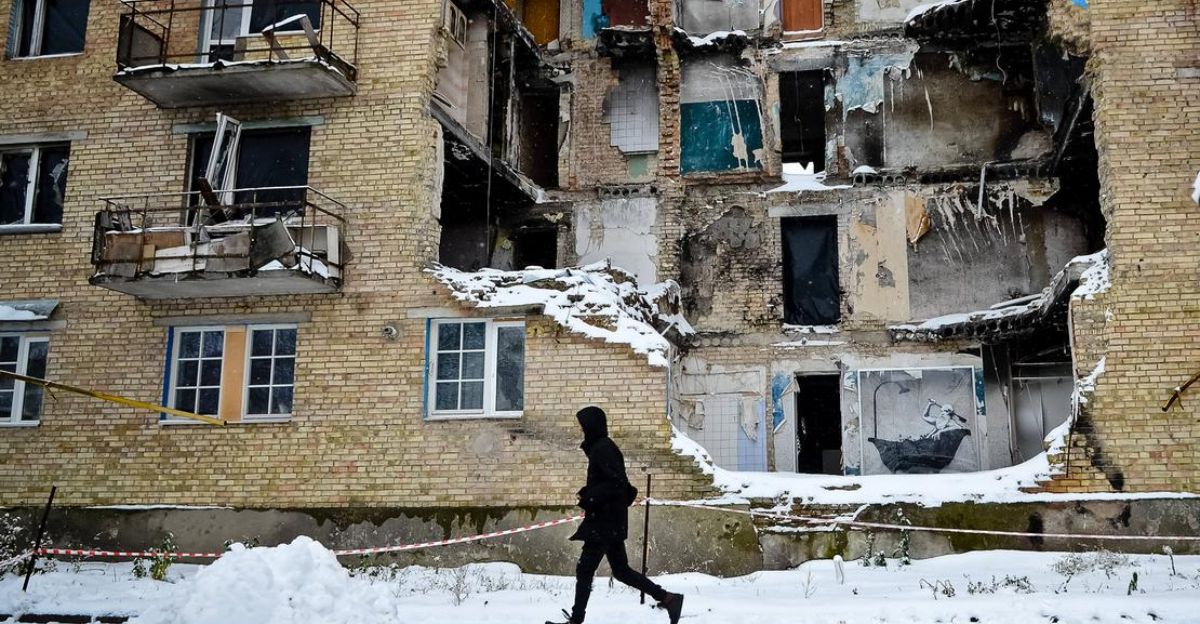
Explosions lit up the night sky over Ukraine as sirens wailed and residents scrambled for shelter. On October 30–31, 2025, Russia unleashed its largest aerial assault of the war, launching more than 650 drones and over 50 missiles in a single night. The attack targeted energy infrastructure and civilian areas, plunging millions into darkness and marking a dramatic escalation as winter approached.
Kyiv Endures Relentless Barrage

Ukraine’s capital, Kyiv, absorbed the heaviest blows. Multiple districts were rocked by explosions, and the city’s power grid suffered extensive damage. Emergency power-sharing measures were quickly enacted, but rolling blackouts left residents without heat or light as temperatures dropped. Civilian casualties were confirmed in the Kyiv region, and the city’s daily rhythm was upended. The coordinated assault extended far beyond the capital: at least 20 locations across Ukraine, including Zaporizhzhia, were struck. Zaporizhzhia alone endured eight ballistic missile impacts and around 20 drone attacks, resulting in deaths and injuries.
The scale and precision of the attack signaled a strategic intent to overwhelm Ukraine’s defenses and disrupt essential services. By targeting both urban centers and provincial regions, Russia aimed to maximize disruption and send a clear message ahead of the harsh winter months.
Energy Infrastructure in Crisis

The timing of the strike was calculated to exploit seasonal vulnerabilities. Russian forces focused on energy grids and civilian infrastructure, seeking to erode morale and cripple daily life as cold weather set in. Damage to power plants and transmission lines triggered widespread outages. In Kyiv, peak restrictions hit between 4 PM and 6 PM, forcing millions to adapt to emergency schedules. Across the country, heating shortages and power cuts became routine, affecting water supply, sewage systems, healthcare, and business operations.
Businesses scrambled to adapt, with factories and shops securing backup generators or reducing hours. Critical sectors such as healthcare and food distribution faced mounting challenges as power disruptions rippled through the grid. The financial burden of procuring alternative energy sources added to the strain, threatening the broader economy.
Households and businesses responded by rushing to purchase portable generators, batteries, and solar panels. Demand surged, leading to supplier shortages and rising prices. These shifts suggested a long-term change in consumer behavior, as resilience became a priority amid ongoing uncertainty.
International Energy Trade and Political Fallout
Ukraine turned to increased electricity imports from the European Union to stabilize its battered grid. The attack drew swift condemnation from European leaders, and cross-border energy flows became more volatile. Discussions intensified around expanding sanctions and providing additional support for Ukraine’s energy sector.
The disruption threatened to reshape regional energy dynamics, with infrastructure, trade agreements, and mutual dependencies under strain. As Ukraine sought immediate relief, the broader implications for European energy security and post-war reconstruction came into focus.
Humanitarian Impact and Government Response

The human toll was stark. At least seven people were killed, including a seven-year-old girl, and dozens more were injured. In Zaporizhzhia, two deaths and 23 wounded were reported. Families in Kyiv’s high-rise apartments endured days without heat or water, while utility and emergency crews worked under dangerous conditions to restore services.
Ukraine’s leadership responded by prioritizing rapid repairs and appealing for international humanitarian aid. President Volodymyr Zelenskyy and other officials called on Western allies to deliver additional air defense systems and impose stricter sanctions on Russia’s energy sector. The government framed the defense of power and civilian infrastructure as essential to the nation’s survival.
Economic and Social Strain

Destruction of energy infrastructure drove up electricity costs and disrupted supply chains nationwide. Industries in Kyiv and beyond faced inflationary pressures as operational costs soared. Analysts warned that continued attacks on power facilities could push Ukraine into recession, threatening jobs and exports.
Hospitals and clinics struggled to operate without reliable power, endangering patient care. Schools closed or shifted online, and vulnerable populations—elderly, children, and displaced families—faced heightened risks from cold and disrupted services. Daily life became precarious, with basic routines replaced by survival strategies.
Global Response and Future Outlook
International media coverage intensified as the scale of the attack became clear. Aid organizations and foreign governments accelerated the delivery of generators, medical supplies, and technical support, reflecting global solidarity with Ukraine’s civilian population. The narrative shifted from a focus on military conflict to the broader humanitarian crisis caused by attacks on the home front.
Some sectors, such as manufacturers of generators and renewable energy equipment, saw a surge in demand, while industries dependent on stable power suffered losses. Financial markets responded with volatility, especially in energy and utility sectors. Experts advised Ukrainians to conserve energy, invest in backup solutions, and stay informed about emergency services.
As winter deepens, Ukraine faces the dual threat of persistent attacks on energy infrastructure and escalating humanitarian stakes. The October 30 assault marked a turning point in the war’s trajectory. The country’s resilience, the effectiveness of air-defense systems, and international support will be critical in navigating the crisis and shaping the post-war order. The urgency is clear: Ukraine’s future depends on swift action and sustained global engagement.